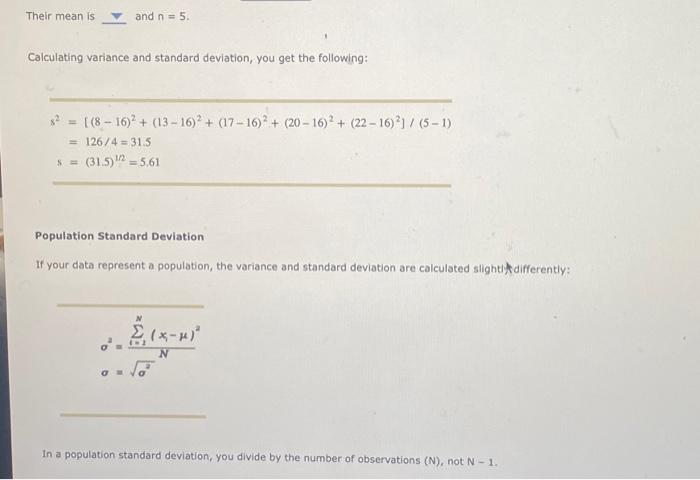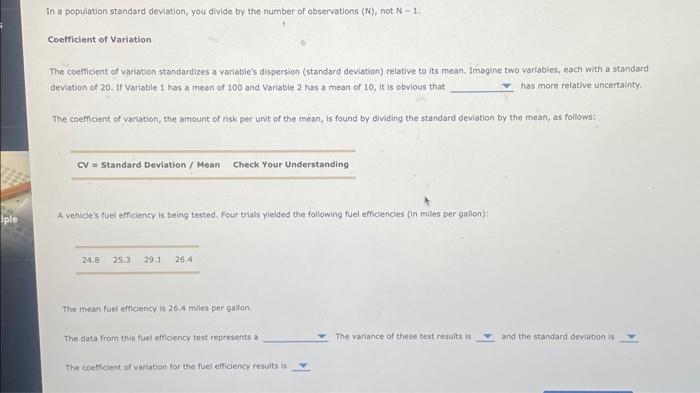19. Variance and standard deviation The most common measures of dispersion are the variance and the standard deviation. These two measures indicate how data are scattered about the mean. However, the unit of variance is the square of the units being observed, which makes it an impractical measure to interpret. For example, if distances measured in meters are analyzed, the variance is measured in meters squared. As a result, you would generally choose to calculate the standard deviation because it represents the average distance each observation is from the mean. 2 and o represent variance and standard deviation population parameters, while s2 and s represent sample statistics. Sample Variance and Standard Deviation For a sample with n observations, variance and standard deviation are calculated as follows: s2=n1i=1n(xx)2s=s2 Another stock has had the following returns over the last five vears: Their mean is and n=5. Calculating variance and standard deviation, you get the following: s2s=[(816)2+(1316)2+(1716)2+(2016)2+(2216)2]/(51)=126/4=31.5=(31.5)12=5.61 Population Standard Deviation If your data represent a population, the variance and standard deviation are calculated silght/Adifferently: 2=Ni=1N(x1)2 =2 In a population standard deviation, you divide by the number of observations (N),notN1. In a population standard deviation, you divide by the number of observations (N), not N=1. Coetficient of Variation The coefficient of variation standardizes a variable's dispersion (standard devation) relative to its mean. Imagine two variabies, each with a standard deviation of 20. If Variable 1 has a mean of 100 and Variable 2 has a mean of 10 , it is obvious that has more relative uncertainty. The coefficient of variation, the amount of risk per unit of the mean, is found by dividing the standard deviation by the mean, as follows: A venicle's fuel efficiency is being tested. Four trials yielded the following fuel efficiencies (in milies per gallon): The mean fuet efficiency is 26.4 miles per gation. The data from this fuel efficiency test represents a The variance of these test results is and the standard deviation is The coefficient of varkation for the fuel efficiency results is









